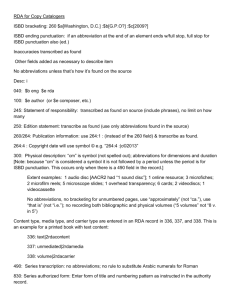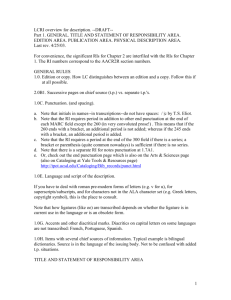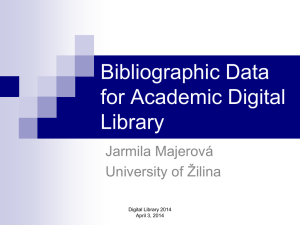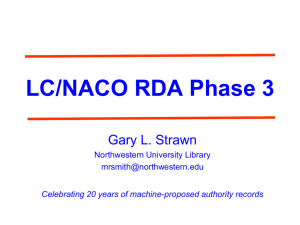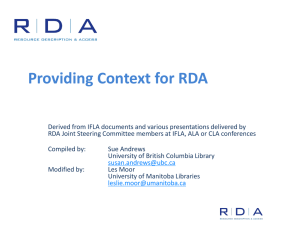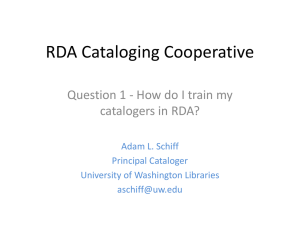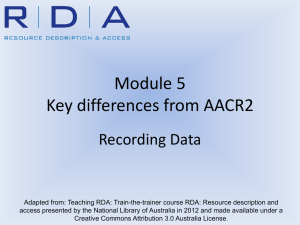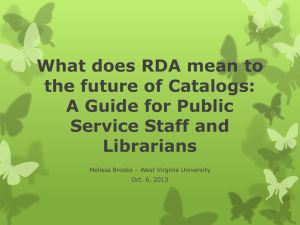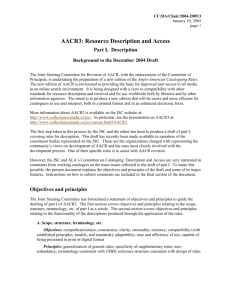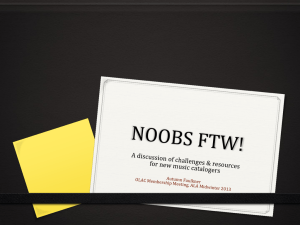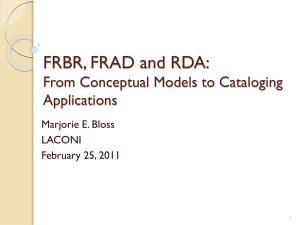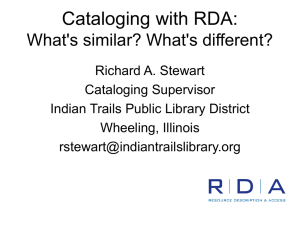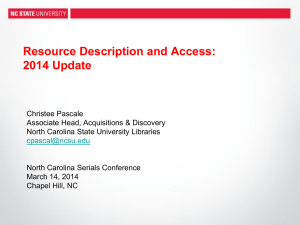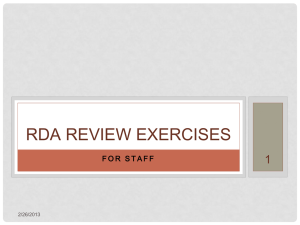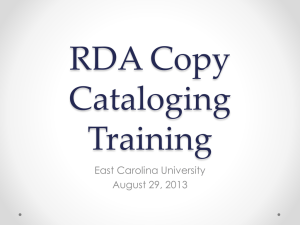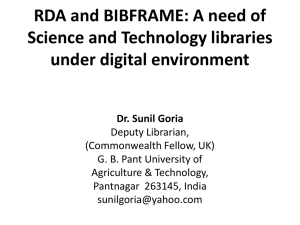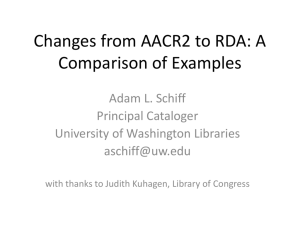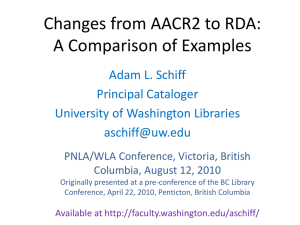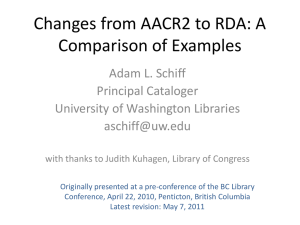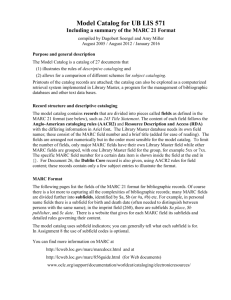Slide presentation - National Library of Australia
advertisement
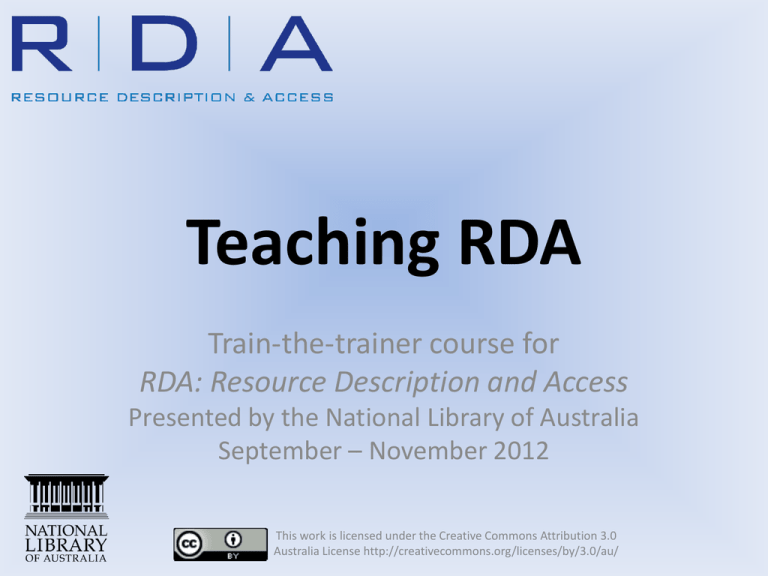
Teaching RDA Train-the-trainer course for RDA: Resource Description and Access Presented by the National Library of Australia September – November 2012 This work is licensed under the Creative Commons Attribution 3.0 Australia License http://creativecommons.org/licenses/by/3.0/au/ Module 4 Key differences from AACR2 Structure Learning Outcomes • Understand similarities between RDA and AACR2 • Understand the structural differences between RDA and AACR2 Key differences from AACR2 What’s the same? Key differences from AACR2 What’s different? • Format-neutral • Content standard • Terminology (AACR2 RDA) • LCRI vs. LC-PCC PS vs. Anglo-American decisions • Online interactive tool • Core elements • FRBR/FRAD structure • User focussed (FRBR user tasks) • Greater emphasis on relationships • Representation (from ICP) • GMD change to Content, Media and Carrier • MARC changes • ISBD changes Key differences from AACR2 What’s different? • Format-neutral • Content standard Intellectual content > Physical format Intellectual content > Data structure Key differences from AACR2 What’s different? • Terminology (AACR2 RDA) • LCRI vs. LC-PCC PS vs. Anglo-American decisions • Online interactive tool • Core elements AACR2 level descriptions AACR2 1.0D3 For the third level of description, include all elements set out in the following rules that are applicable to the item being described. RDA Core elements Core elements Where in RDA? • Introduction: 0.6 Core elements • Each Section – “General guidelines” – Eg. 1.3, 5.3 • Each “Core” instruction marked as core – Eg. 3.3 Carrier type, 2.4 Statement of responsibility Core elements Conditionally core • Certain type of resources or entities • If related core elements are not available – Eg. Date of copyright, if no date of publication • If multiple, first one only – Eg. Multiple statements of responsibility • If required to distinguish Eg. Fuller form of name core if it will distinguish the name from another similar one Core elements Institutional policy • LC-PCC PS – “LC Core” • NLA – “Core for NLA” elements • Libraries Australia Required Data Elements http://www.nla.gov.au/librariesaustralia/services/cataloguing/ Key differences from AACR2 What’s different? • Representation (from ICP) • User focussed (FRBR user tasks) • FRBR/FRAD structure • Greater emphasis on relationships FRBR/FRAD Structure Attributes Title proper: Whose bottom is this Statement of responsibility: Wayne Lynch Place of publication: Milwaukee Publisher: Gareth Stevens Pub Date of publication: 2003 Media type: unmediated Carrier type: volume Extent of text: 32 pages Dimensions: 22 x 24 cm Series: Name that animal Content type: text; still images Language of expression: English Relationships Work manifested: Lynch, Wayne. Whose bottom is this Creator: Lynch, Wayne, author Screen image from the RDA Toolkit (www.rdatoolkit.org) used by permission of the Co-Publishers for RDA (American Library Association, Canadian Library Association, and CILIP: Chartered Institute of Library and Information Professionals) Key differences from AACR2 What’s different? 100 1 $a Lynch, Wayne,$e author 245 10 $a Whose bottom is this? /$c written and photographed by Wayne Lynch. 250 $a U.S. ed.. 264 1 $a Milwaukee, Wis. :$b Gareth Stevens Pub.,$c 2003. 300 $a 32 pages :$b colour illustrations ;$c 22 x 24 cm. 336 $a text $2 rdacontent • GMD change to Content, 336 $a still images $2 rdacontent 337 $a unmediated $2 rdamedia Media and Carrier 338 $a volume $2 rdacarrier • MARC changes • ISBD changes Key differences from AACR2 Summary • Instructions based on AACR2 • Structure based on FRBR/FRAD • Compatible MARC21 and ISBD Exercise

